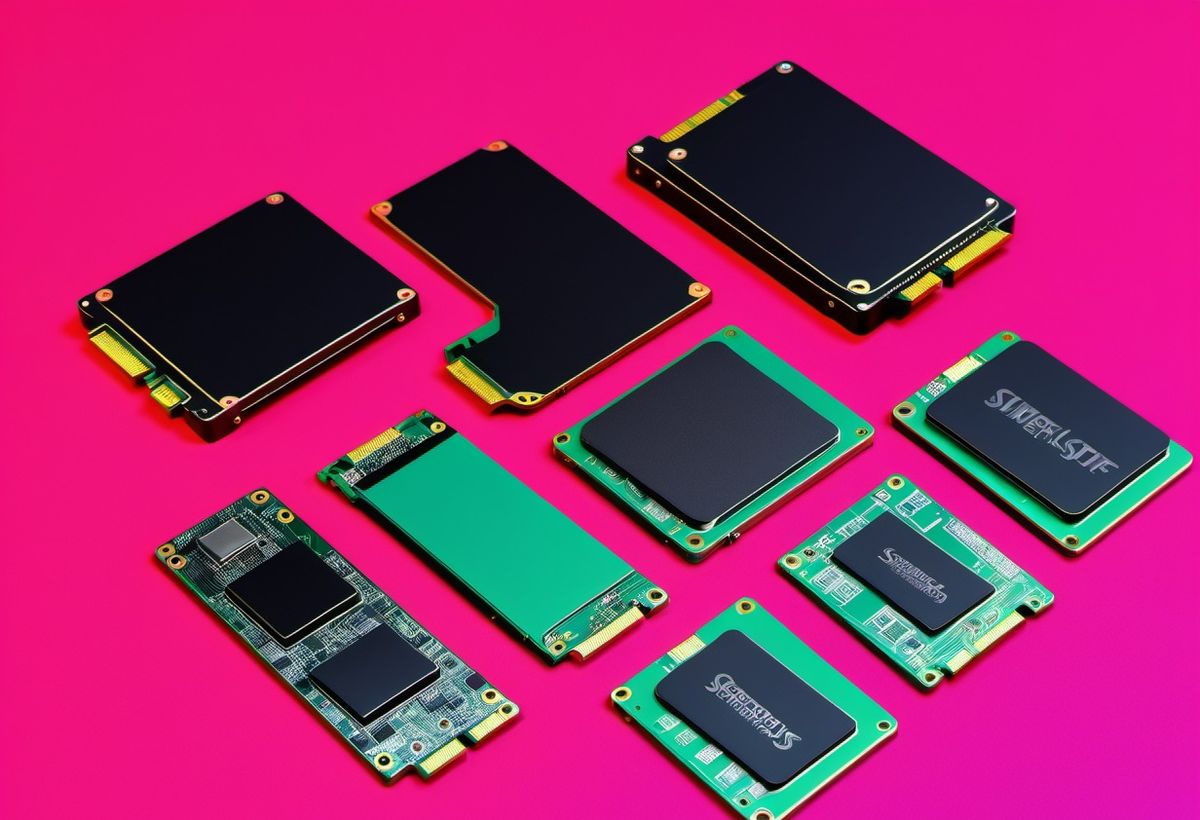In recent years, solid-state drives (SSDs) have gained immense popularity among technology enthusiasts and professionals alike. Let us explore the SSD Pricing Trends in this document. With their lightning-fast speeds and improved reliability compared to traditional hard disk drives (HDDs), SSDs have become the go-to choice for those seeking enhanced performance and efficiency in their computing devices. However, a concerning trend has emerged in the SSD market: rising prices.
| SSD Type | Description | Connector Type | Key Features |
|---|---|---|---|
| SATA SSD | Uses the Serial Advanced Technology Attachment (SATA) interface. | SATA I, II, III | – Common and widely supported interface. – Good performance for everyday tasks. |
| M.2 SATA SSD | Newer format, lighter, and smaller than SATA SSDs. | M.2 | – Compact design suitable for thin laptops. – Similar performance to SATA SSDs. |
| mSATA SSD | Mini version of SATA SSDs. | mSATA | – Compact form factor. – Often found in older laptops. |
| M.2 PCI-E SSD | Utilizes the PCI Express (PCI-E) interface for faster speeds. | M.2 | – High-speed data transfer. – Ideal for gaming and content creation. |
| M.2 NVMe SSD | Employs the NVMe (Non-Volatile Memory Express) protocol for exceptional performance. | M.2 | – Lightning-fast read/write speeds. – Best choice for demanding applications. |
For years, SSD prices have been steadily declining, making them more accessible to a wider range of consumers. This downward trend was largely driven by advancements in technology, increased competition among manufacturers, and economies of scale. As a result, SSDs became a cost-effective solution for individuals and businesses seeking to upgrade their storage capabilities.
However, recent market conditions have caused a shift in this trend, and SSD enthusiasts are now facing the unfortunate reality of rising prices. Several factors have contributed to this change, and it is important to understand the underlying reasons behind this shift.
The Factors of SSD Pricing Trends:
One significant factor impacting SSD pricing is the shortage of NAND flash memory, the key component in SSD production. NAND flash memory is used to store data in SSDs, and its availability directly affects the production and pricing of these drives. Over the past few years, demand for NAND flash memory has increased significantly, driven by the growing adoption of SSDs in various devices, including laptops, desktops, and servers. This surge in demand has outpaced the supply, leading to a shortage and subsequent increase in prices.
Another factor influencing SSD pricing is the fluctuation in the cost of raw materials. The production of SSDs requires various components, such as controllers, PCBs, and connectors, which are subject to price fluctuations in the global market. Factors such as supply chain disruptions, changes in exchange rates, and geopolitical tensions can all impact the cost of these raw materials, ultimately affecting the overall pricing of SSDs.
Furthermore, the ongoing COVID-19 pandemic has had a profound impact on the global economy, including the technology sector. Supply chain disruptions, factory closures, and reduced manufacturing capacities have all contributed to the increase in SSD prices. The pandemic has caused a ripple effect throughout the industry, creating bottlenecks in production and distribution channels, leading to higher costs for consumers.
While the rising prices of SSDs may be disheartening for enthusiasts, it is essential to consider the long-term implications of these trends. Despite the current challenges, the demand for SSDs continues to grow, driven by the need for faster and more reliable storage solutions. As technology evolves and new applications emerge, the demand for SSDs is expected to remain strong.
Manufacturers are also working diligently to address the supply chain issues and increase production capacities to meet the growing demand. As the industry adapts to these challenges, it is likely that SSD prices will stabilize and eventually resume their downward trajectory.
In the meantime, consumers can make informed decisions by considering alternative storage options, such as hybrid drives or higher-capacity HDDs, which may offer a more cost-effective solution for their needs. Additionally, keeping an eye on promotions and discounts from reputable manufacturers can help mitigate the impact of rising prices.
In conclusion, the rising prices of SSDs may pose a temporary setback for enthusiasts and consumers alike. However, understanding the underlying factors driving this trend can provide valuable insights into the dynamics of the SSD market. While the current situation may be discouraging, it is important to remember that the demand for SSDs remains strong, and the industry is actively working to address the challenges and stabilize prices. As technology continues to evolve, SSDs will undoubtedly remain a vital component in enhancing the performance and efficiency of computing devices.
So, while the news may not be ideal for SSD enthusiasts, it is crucial to remain optimistic about the future of SSD pricing and the continued advancements in storage technology.
Read More Article on SoftechOnline
Video Contents on YouTube
